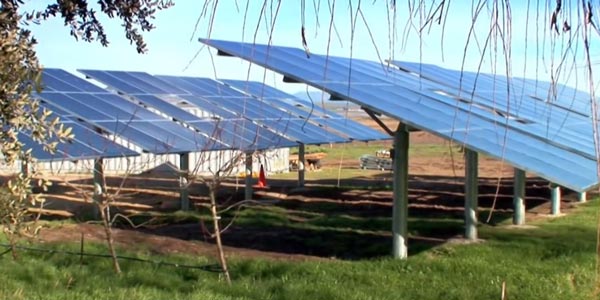By William Opalka
The installed capacity requirement ISO-NE filed with FERC last week shows a continuing trend of slightly declining load growth and a greater reliance on behind-the-meter solar power (ER17-320).
New England’s ICR for the upcoming 11th Forward Capacity Auction (delivery year 2020/21) is 34,075 MW. That represents a capacity need of 35,034 MW minus 959 MW of Hydro-Quebec Interconnection Capability Credits.
In FCA 10 earlier this year, ICR resources of 35,126 MW were required.
“There was a small drop in ICR, due primarily to a lower load forecast, and that was due to the growing impact of behind-the-meter PV and energy efficiency measures,” ISO-NE spokeswoman Marcia Blomberg said.
The RTO said the requirement was reduced by 720 MW (ER17-321). In FCA 10, ISO-NE successfully defended at FERC its inclusion of 390 MW of behind-the-meter solar that was not based on historical loads. (See FERC Accepts ISO-NE’s Solar Count over Protests.)
ISO-NE said it used coincident hourly load and PV production data from 2012-2015 and information from utilities to compile its requirement.
The RTO said it qualified 150 new capacity resources, totaling 5,958 MW for FCA 11. The identities of the new resources are confidential.
ISO-NE has three capacity zones for the auction, which will be held Feb. 6: the import-constrained Southeast New England zone (SENE), including Rhode Island and southeastern and northeastern Massachusetts; export-constrained Northern New England (NNE), which includes Vermont, New Hampshire and Maine; and Rest of Pool, which includes central and western Massachusetts and Connecticut.
The RTO’s filing said five renewable energy projects in northern Maine, a landfill gas facility, a wind farm and three hydropower projects, totaling more than 22 MW, were disqualified because of insufficient transmission capacity. The Orrington interface in eastern Maine, critical to unlocking wind energy potential from the northeastern areas of the state, is the subject of a study now underway by ISO-NE planners. (See ISO-NE Planning Advisory Committee Briefs.)
Following a contentious multiyear stakeholder process that FERC essentially ended over the summer, FCA 11 will be the first time ISO-NE uses sloped demand curves for its constrained zones. (See FERC Accepts ISO-NE Sloped Zonal Demand Curves.)
ISO-NE received two retirement delist bids, totaling 27.3 MW, from resources in northeastern Massachusetts and Maine. They were confidentially identified to RTO officials in July.
Protests challenging the ICR are due Nov. 23. The RTO wants FERC to accept the filing by Jan. 7.


